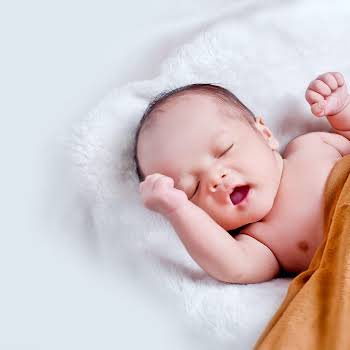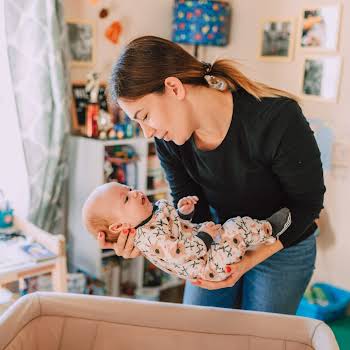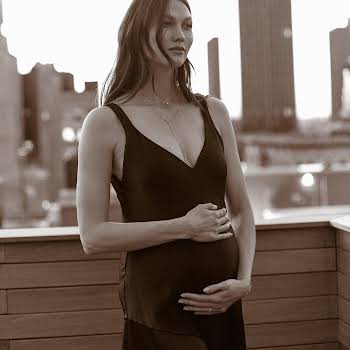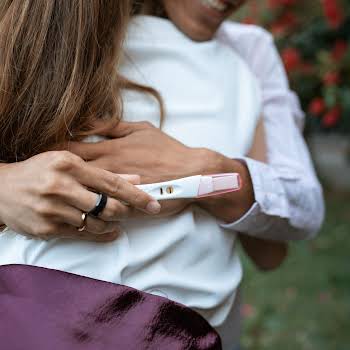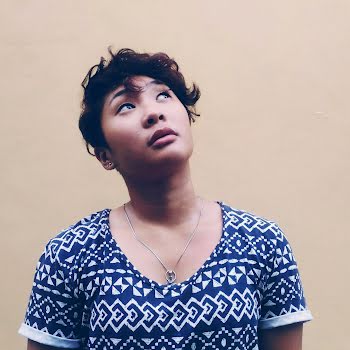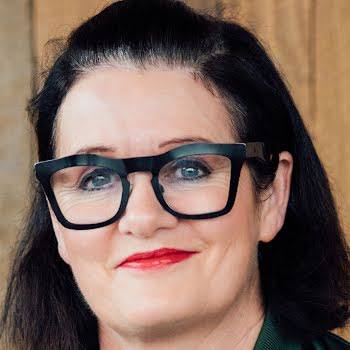
“I told my husband ‘they’ve found something suspicious in my brain, we’re going to have our baby tomorrow night'”
By Amanda Cassidy
28th Nov 2023
28th Nov 2023
In this searingly honest piece, Mayo-born Tara Nestor tells the dramatic story of her son's birth and the pregnancy complication that changed her life.
Two months before my first baby was due, I was packing my hospital bag and I thought of Kate Middleton on the steps of the Lindo Wing just hours after giving birth. I imagined myself like Kate, in a pretty dress, cute pumps, freshly blow-dried hair and meticulously applied make-up with my new baby cradled in my arms.
In this blissful, self-assured state of mind, I packed a sky-blue dress, my hair drier (which took up far too much room in my bag!) and my make-up products. Only an unexpected twist of fate was set to take me down a very different path to that of the beautiful duchess.
I remained in the UCLH hospital in London for seven days after the birth of my son, four days in the close observation unit followed by three days in the labour ward. It was equally the most joyous and the most distressing seven days of my life.
Throbbing
I had a smooth pregnancy up until the 36-week mark, only suffering from mild fatigue during the first trimester. Then, at 36 weeks, my trajectory changed with a sudden migraine. I momentarily lost my full vision and the ability to speak coherently. This was followed by a severe pain behind my right eye and vomiting. I got a taxi home from the office immediately and lay in bed. Some hours later the migraine had subsided. That was the first sign something wasn’t quite right. A couple of days later, I suffered another ferocious headache and at 37 weeks I presented at A&E at 5:30am after a sleepless night with a throbbing pain in my head.
Dismissive
“Hug some trees”, he said “as your body is about to go through something major”.
Several neurological tests were conducted on me that morning, all of which I passed with flying colours. No imaging was done. I was assured all was well, was advised to take certain painkillers to manage the pain and I was sent home. The headaches persisted over the following days, growing in intensity and lingering from one day to the next. I told the midwife about my pain and my experience at A&E.
His view was that I was probably stressed and he advised me to finish up at work and prepare myself for what was to come. “Hug some trees”, he said “as your body is about to go through something major”. It is true that I had a stressful job but I was confident it was not the source of my headaches and no amount of tree-hugging was going to cure the intense pain. His dismissive attitude and comments were insulting and displayed a level of incompetence that I did not dwell on at the time. I continued to work as planned until I was 38 weeks pregnant, suffering through the pain without relaying my discomfort to my colleagues for fear of seeming weak.
Something wrong
I finished work on a Friday to start my maternity leave, two weeks before my due date. I made an appointment for acupuncture therapy during the first week of my maternity leave as I had read that acupuncture can assist with headaches and many pregnant women avail of this therapy for various reasons. After a brief discussion, the acupuncturist placed tiny needles around my ankles and then in my head. I immediately started to feel very weak and within seconds I started to lose consciousness.
Thankfully the acupuncturist reacted without delay and retracted all needles from my body in super quick fashion. After lying down for 20 minutes and taking some water I recovered. Refusing an ambulance, I left the clinic and walked home (I lived a very short distance away), leaving a very concerned and confused acupuncturist behind. It was the first time in her career that something like this had happened under her care.
The pain behind my right eye travelled down to the right side of my neck and my ear felt as though it needed to pop.
For the rest of that week, I stayed at home and did very little save for massaging my temples and holding cold packs against my forehead in desperate attempts to ease the tension that now lived permanently in my head. The following weekend, now 39 weeks pregnant, the pain behind my right eye travelled down to the right side of my neck and my ear felt as though it needed to pop.
On Monday I presented at my local GP. I will be forever grateful to the young female doctor who examined me that day. She told me to cancel any plans I had, wrote a referral letter and sent me straight to the hospital for screening. Later that night following hours of waiting around and a series of further neurological tests, I was sent for a CT scan on my brain. Afterwards, I was told I could go home and I would get a call if anything untoward showed up on the scan but I was assured on first reading all seemed well.
Suspicious
My husband and I left the hospital and went out for some food, ravenous after a long day of fasting. An hour or so later we were home and my phone rang. Unknown English number. I knew I was about to receive some unwelcome news. I held my breath as the doctor told me that “something suspicious” was appearing on the scan. He advised me to come to the hospital first thing in the morning for an MRI on my brain and instructed me to bring my hospital bag. I hung up and said to my husband “they have found something suspicious in my brain and we are going to have our baby by tomorrow night”.
That afternoon, I was diagnosed with an extensive cerebral venous thrombosis (CVT). The rest of that day was a blur.
I cannot remember the rest of that evening. Early the next morning, while my husband set up his automatic out-of-office replies, I gathered together some last-minute items needed for the hospital (thankfully I had been organised so this wasn’t a stressful process). I had my MRI at 10am that morning and was then whisked away to have my bloods taken and heart monitored, while instructed to fast until the results of my MRI were available. That afternoon, I was diagnosed with an extensive cerebral venous thrombosis (CVT). The
rest of that day was a blur.
The consultant obstetrician, Melissa, was a godsend. Calm, empathetic and confident, I trusted her completely in my moment of absolute fragility. She explained my diagnosis and how it would typically be treated. Before confirming next steps, the medical team including, consultants from neurology, haematology and obstetrics came together to discuss and agree on an appropriate course of action. The team decided the safest way forward was to deliver my baby by emergency caesarean section that night and my treatment plan, which included anticoagulants twice a day by injection for at least six months, was to start six hours after my surgery.
Endurance
My beautiful baby boy was delivered at 11:36pm that night and he was perfect. I received my first jab of anticoagulants into my right thigh six hours later. And another journey began.
Baby Joshua was born on 10 March 2020, a week early and one week before the UK went into lockdown due to Covid-19. My parents had travelled to London from Dublin the day he was born but were not permitted entry to the hospital due to Covid-19 restrictions. They returned to Dublin a couple of days later amidst whisperings of a national lockdown. My
parents saw their new grandson for the first time six months later.
The frame clicked closed and the motorised bed started to move into the tunnel towards the scanner. I clung tightly to the panic button in my right hand
Day four of my hospital stay was particularly memorable. I had woken that morning with a headache (despite the anticoagulants and the heavy codeine dosage every few hours). I sensed a slight panic amongst the medical team when I reported the pain and another emergency MRI was arranged in short order for that morning. A porter collected me from my hospital cubicle, helped me into a wheelchair and pushed me across to the other side of the hospital where I was once again prepped for an MRI. I lay down on the motorised bed, disposable foam ear plugs were inserted into my ears, big ear muffs (something akin to what farmers use while operating loud equipment) were placed over my ears, a small, soft pillow was put under my head and a frame similar to a small cage was placed around my head.
We shared our war stories. He was waiting outside the MRI room for his 36-year-old son who had been diagnosed with brain cancer. We cried together.
The frame clicked closed and the motorised bed started to move into the tunnel towards the scanner. I clung tightly to the panic button in my right hand. This was progress from my first MRI experience when I refused to let go of the nurse’s hand as the motorised bed pulled me towards the scanner, almost taking her with me. I kept my eyes shut tightly for the duration of the scan. After the MRI was completed, I was assisted back to my wheelchair and I waited in the corridor. Without warning the tears spilled over and trickled down my cheeks until they became uncontrollable and I was sobbing.
Faith
A man sitting opposite me came over with lots of tissues and we shared our war stories. He was waiting outside the MRI room for his 36-year-old son who had been diagnosed with brain cancer. We cried together. The same porter who had escorted me earlier arrived to take me back to my hospital bed and back to my husband and baby. At the sight of my tear-stained face, the porter told me in no uncertain terms to stop crying, to believe in God that all would be well and to pray.
For the first time in a very long time, I prayed that night. The MRI results confirmed that my CVT had not altered. I have a memory of later that same day, lying on the hospital bed wearing extremely tight elastic stockings pulled up to my knees (so tight that my excess flesh spilled casually over the top), a huge bandage around my caesarean wound, a pair of c-section recovery postpartum underwear that came right over my still very pregnant-looking tummy and a hospital gown (the same one I had leaked breast milk on for four days), adorned with greasy hair matted to my head. Kate Middleton with her flawless presentation hours after she delivered her babies was no longer a goal of mine, for obvious reasons.
I opened my hospital gown to reveal my swollen breasts and raw, blistered nipples
My caesarean wound was sore and my breasts were now throbbing, so much so that brain clots and MRIs left my mind momentarily. I suspected I had mastitis and asked my husband to fetch the doctor. A very young junior doctor together with a young nurse tended to me. The doctor asked if he could take a look and with zero vanity left following the previous four days of major surgery, MRI scans and midwives manipulating my breasts to get my baby to do an exaggerated latch, I opened my hospital gown to reveal my swollen breasts and raw, blistered nipples. I remember pointing rather frantically to the redness that had appeared and waited for the doctor to confirm my self-diagnosis. He gave one quick glance at my breasts from where he was standing and averted his eyes almost immediately.
Pain
He advised that I didn’t have mastitis but that I should massage my breasts under warm water in the shower with a flannel in order to prevent it from developing. I quickly became self-conscious of my exposed body and covered up before heading off to the bathroom with my flannel tucked under my arm. Standing for almost an hour under warm water massaging my chest, I was still in pain. I repeated this process several times a day for the remainder of my hospital stay.
It never worked and the discomfort persisted. I remained in hospital for another three days after that, each day receiving a jab at 6am and another at around 10pm while my struggle with breastfeeding my baby continued. Blood tests and consultations with the consultant neurologist and haematologist became very frequent. Thankfully, my husband was allowed to stay with me all the time. He was my rock amidst the chaos. As I prepared to leave hospital a week after giving birth, I received a demonstration on how to self-inject as it dawned on me that this was something I now had to face on a daily basis (at this point, for an indefinite period). Initially, I was quite horrified at the thought and decided that perhaps it would be better if my husband injected me. In the end, I decided to take on the task myself as it gave me more control (it had nothing to do with my husband being squeamish!)
CVT is difficult to diagnose and is frequently missed or diagnosed late because it can mimic other acute neurological conditions. I also learnt that it is more common in women than men due to its association with pregnancy.
Unaware
What remained unconfirmed for some time was the cause of my CVT. With no family history, a relatively young age and a healthy pre-pregnancy weight, CVT was not an obvious risk factor in my case. It was concluded in the months following my diagnosis that my CVT was provoked by my pregnancy. From conversations with the doctors who treated me and from my own online research after the event, I understand that CVT is difficult to diagnose and is frequently missed or diagnosed late because it can mimic other acute neurological conditions. I also learnt that it is more common in women than men due to its association with pregnancy.
I had not been aware of CVT or its association with pregnancy prior to my diagnosis and when I tell people my story I am met with shock. It seems it is a risk factor in pregnancy that few know about. I had further MRIs in the months that followed. My CVT never dissolved or reduced in size but I understand that recanalisation of my blood vessels occurred allowing sufficient blood flow to service my brain.
Thankfully, there is no damage to my brain tissue. I remained on anticoagulants for 12 months postpartum. Once I stopped breastfeeding, I was able to take them orally and dispense with the injections, which made life more pleasant and allowed the injection site to recover from severe bruising. In terms of any future pregnancies, I have been advised that the pregnancy would need to be planned and I would have to take anticoagulants by injection for the duration of my pregnancy and any period of breastfeeding. It was not an ideal ending to what had been a smooth pregnancy but I consider myself lucky.
CVT can result in death or permanent disability but it generally has a favourable prognosis if diagnosed and treated early. I dread to think of the consequences had my CVT not been discovered when it was. As I look back now to when I was packing my hospital bag two months before my due date, I laugh at the absurdity of including my bulky hair drier. If there is a next time, that is an item I will be leaving at home.
This article was originally published in September 2021.












